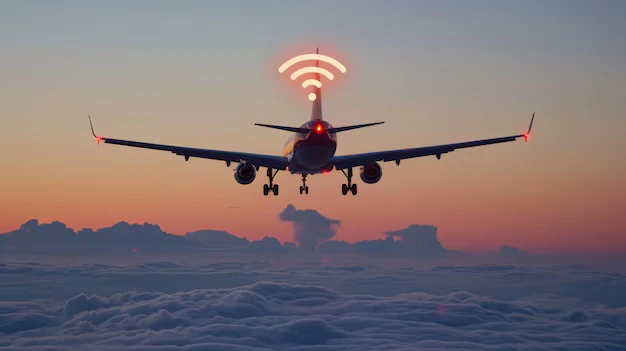
Air India’s recent announcement to roll out free in-flight Internet services on select domestic and international flights marks a significant step in enhancing passenger experience. Here’s an explanation of how this service works and the technologies behind it.
Aircraft Equipped with Wi-Fi
Currently, Air India’s in-flight Wi-Fi is available on:
- Airbus A350
- Boeing 787-9
- Select Airbus A321neo aircraft
These planes are equipped with the necessary hardware to enable Internet connectivity, a feature introduced on international flights as part of a pilot program and now extended to domestic routes.
Technologies for In-Flight Connectivity
- Air-to-Ground (ATG) Technology
- Uses cellular towers to provide Internet signals to aircraft.
- An antenna, typically located on the plane’s belly, picks up these signals from ground towers.
- Works well over populated areas but is limited over large water bodies or remote regions without cellular towers.
- Satellite-Based Connectivity
- Uses satellites to transmit Internet signals to aircraft.
- An antenna on top of the plane receives signals from satellites, which relay data between ground stations and the aircraft.
- Offers broader coverage, especially in areas without ground infrastructure.
How In-Flight Wi-Fi Works
- Passengers connect to the ‘Air India Wi-Fi’ network via their devices.
- They are redirected to an Air India portal where details like PNR and last name are required.
- Once authenticated, Internet access is granted.
The system works through:
- Cabin Antennae: Receive signals from passengers’ devices.
- Onboard Server: Processes these signals.
- Transmission: Signals are relayed either to satellites (for satellite-based systems) or directly to ground towers (for ATG systems).
Challenges with Speed
- In-flight Internet speeds are often slower than on the ground due to bandwidth limitations and transmission distances.
- Newer technologies aim to improve this.
Costs for Airlines and Passengers
- For Airlines:
- High initial costs to install antennae and retrofit older aircraft.
- Air India’s $400 million retrofit program includes installing connectivity equipment.
- For Passengers:
- Globally, many airlines offer limited free Internet or charge for additional data.
- Complimentary Wi-Fi for economy passengers is rare due to high operational costs.
Air India currently offers free Wi-Fi as an introductory service but may charge in the future, aligning with global trends to use in-flight connectivity as a source of ancillary revenue.
Future Prospects
With growing demand, in-flight Internet is becoming a standard offering, especially among full-service carriers. For Air India, it represents a move towards modernizing services and meeting international benchmarks under the Tata Group’s vision for global competitiveness.
Also Read: India’s Total Exports Crossed $800 Billion Despite Challenges
Disclaimer
This article is for educational purposes, focusing on the relevance of the topic for UPSC aspirants. Students should stay updated on further developments and refer to official sources for comprehensive preparation.
Follow Fusion IAS


